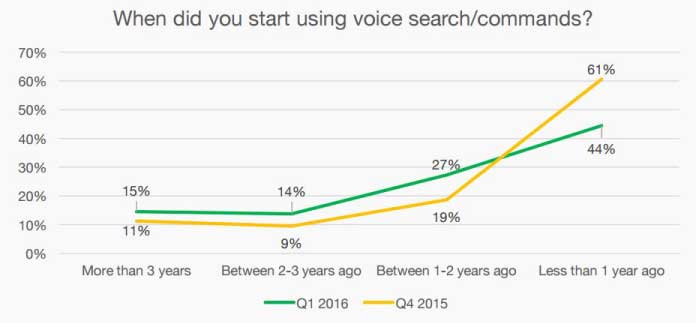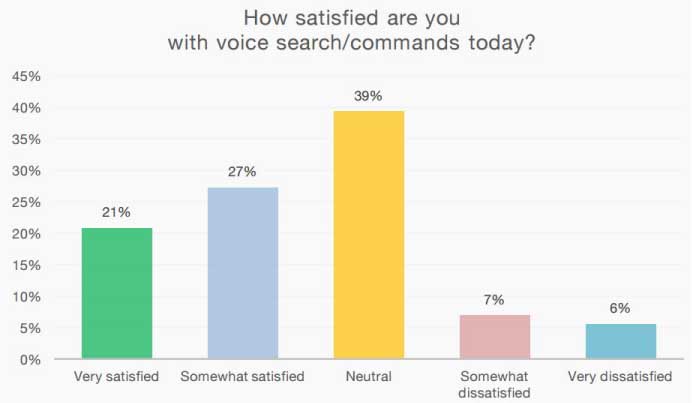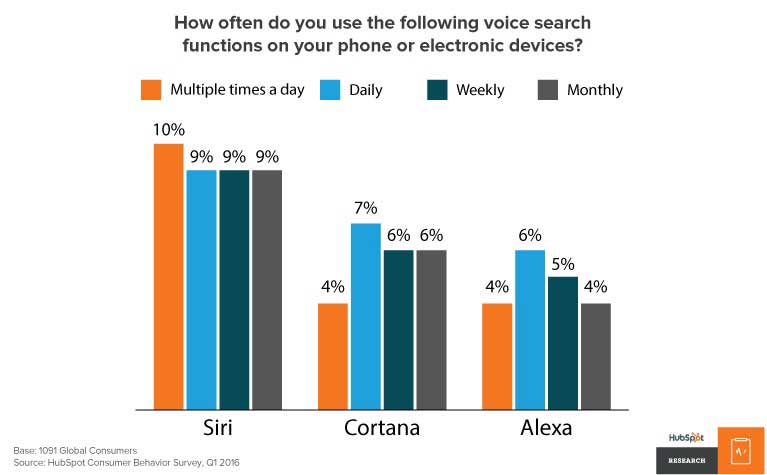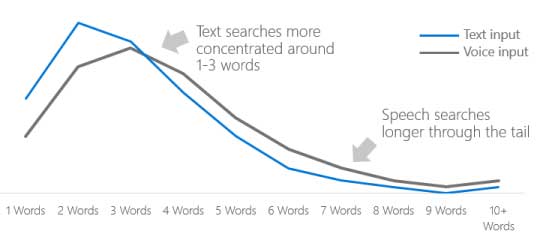
“Hello computer” – No answer in 1986, but plenty of answers in 2016
You should be acting like Scotty by now. Yes, three decades ago, Mr. Scott (of “Beam me up, Scotty”) famously assumed computers had voice interfaces. He was shocked when he realized he had to type to get what he wanted. “How quaint!” Scotty called a keyboard in 1986. This was one year after Dell produced its first design and two years after the original Apple Macintosh. Star Trek gave you a 30-year head start to prepare for the needs of your customers today. Do they look at you and say “how quaint” or are you keeping up with their behavior?
Users are rapidly adopting voice search. Keep pace with them by adapting to how they are searching for you. There are multiple reasons it makes sense to move to voice search:
- Safety: Users are starting to search while driving by using voice search. It allows them to do what they want without taking their eyes off the road. This isn’t an endorsement or criticism. It is what it is. It is here and now.
- Convenience: It is easier to say “OK Google” or press down the Apple home button and bark out your command than to tediously type it in.
- Speed: It is faster to search by voice than to type.
- Accuracy: The voice recognition algorithms have gotten so good that they can be more accurate than mistyped or misspelled searches.
- Fun: Some searches are just downright fun! Don’t believe me? Do a voice search on “Why are fire engines red?” and see what comes up.
About 11 years ago, I broke my wrist and had to rely on Dragon Naturally Speaking to type emails, write reports, etc. The program trained me more than I trained the program. I spoke robotically to try to reduce errors. Since then, the algorithms have advanced considerably. As accuracy has improved by leaps and bounds, so has adoption of voice search.
 New research shows that buyers and sellers are misaligned. Get the latest survey results from over 500 global companies.
New research shows that buyers and sellers are misaligned. Get the latest survey results from over 500 global companies.
The Data Speaks for Itself
Mindmeld is a San Francisco-based virtual intelligence company that compiles regular statistics on the adoption of voice search. Their data shows we are at a tipping point and adoption is increasing exponentially.

Most people started using voice search in the last year
Contrasted by my experience with Dragon Naturally Speaking, users are satisfied with the current voice search algorithms. Again, data from MindMeld shows that.

Voice search has a high level of satisfaction
Hubspot has also been collecting data and find that users are using voice search across multiple devices. Hubspot’s data includes searches done on Amazon’s Alexa.

How often do you use voice search?
What does this mean for me?
Voice search is here. The data is clear. So what do you do now? The answer is to start thinking more like a human and less like a bot. Optimize your content and key phrases to be in response to human speech as opposed to bot-speak.

Voice searches are longer than text searches
Humans speak more words than they type so voice searches have more words than typed searches. According to MOZ.com, voice searches have at least one more word than a text search. Think about some examples and it becomes clear.
| Text Search | Voice Search |
|---|---|
| “Bank” (from Google maps) | “Where is the nearest bank” (from Google Now) |
| “Weather” | “What is the current weather?” |
| “Sunrise” | “What time does the sun rise tomorrow” |
| “Vacation cruise” | “What is the best deal on a cruise in the Caribbean” |
| “Save water” | “How can I save water” |
You see the pattern. So, how do people search for your business and products? What are the natural language phrases people use to connect their needs with your offerings? Do you have an app that should integrate voice commands?
Start forming your content strategy around natural language. This will position you for further adoption of voice search. More importantly, it aligns you with the questions your customers are asking.
Credits
Many thanks to the following sources for this report:
- “Start Trek IV: The Voyage Home”, 1986, Paramount Pictures, Industrial Light & Magic
- Intelligent Voice Assistants, User Adoption Survey Results Q1 2016, MindMeld
- Hubspot Reasearch
- “How Voice Search Will Change Digital Marketing for the Better“, Moz.com,
